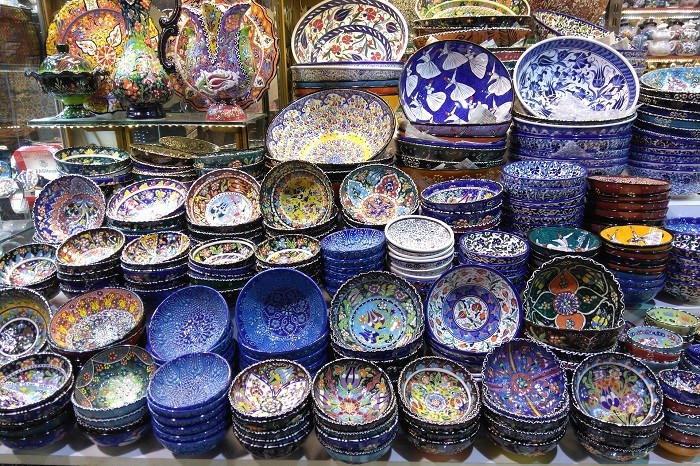While on the Bosphorus, one of the most impressive sights is of Dolmabahce Palace. With construction starting in 1842 before finally finishing in 1856, this particular palace comes from the height of the Ottoman Empire and is located in the Besiktas District of the country’s largest city.
As always, we’re going to explore the history of Dolmabahce Palace before then offering advice for visiting in 2019 and beyond.
History of Dolmabahce Palace Istanbul
Taking around 14 years to build, Abdulmecid I ordered the construction of the palace and he was the 31st sultan of the Ottoman Empire. For many years, the sultan had resided at Topkapi Palace but soon noticed how this had fallen behind many of the extravagant palaces of Europe. For a more modern building with a contemporary style, Abdulmecid decided on a new construction costing around five million Ottoman gold lira. Of course, this means nothing to us now but experts believe it equates to $1.5 billion (today) or 35 tonnes of gold.
Over the years, Dolmabahce Palace housed no fewer than six sultans right up until 1924 where ownership was transferred to the national heritage (Turkish Republic). With this in mind, it wasn’t long before the Republic of Turkey’s first president, Mustafa Kemal Ataturk, spent his summers at the palace.
Architecture
If you visit Dolmabahce Palace Istanbul, one of the first things you’ll notice is the stunning architecture and design of the building. As the largest palace in Turkey, Dolmabahce has some impressive numbers;
- 45,000 square metres of space
- 285 rooms
- 68 toilets
- 46 halls
- 6 baths
In terms of design, it seems to offer a blend of four different styles; traditional Ottoman, Baroque, Neoclassical, and Rococo. From the inside, the Ceremonial Hall has an impressive chandelier which many believe was a gift from Queen Victoria. With 750 lamps and a weight of 4.5 tonnes, it’s not something you’ll see every day.
Visiting Dolmabahce Palace
Now we understand more about the history and the stories of Dolmabahce Palace, you need to know some visiting information so you can continue your learning experience. Fortunately, Dolmabahce Palace is open from 09:00 until 17:00; however, you will need to be aware that the palace doesn’t open on Mondays and Thursdays. To get inside, you’ll pay 40 Turkish Lira which converts to around £5.70. Considering you’ll get access to a 19th century building with cultural, social, architectural, and historical significance, we think this price is (more than!) fair.
If your trip to Istanbul comes in the summer, we highly recommend planning your day carefully because the queues for Dolmabahce Palace will quickly build. If you leave it too late, you’ll be waiting out in the sun for long periods. Therefore, we recommend visiting early in the morning. Not only does this allow you to avoid the queues, it also means you can explore the palace and take in the experience without bustling with others for position.
If you want to learn about Dolmabahce Palace Istanbul as you walk around, visit the official website for the palace and fill out a contact form. After providing some details, you can reserve a guided private tour and this saves waiting on the day itself. You’ll have the option to visit the official section of the palace (Selamlik), the privy chambers (Harem), or both.
Ultimately, we love a landmark that offers traditions, insights into cultures, and beauty – Dolmabahce Palace seems to fit this perfectly. From the inside out, the palace is stunningly extravagant and the combination of styles catch the attention immediately
Let us plan your Istanbul trip that includes a visit to the Dolmabahce Palace. Visit Istanbul with Classic Turkey Tours.
Choose From These Exciting Istanbul Tours OR To Plan Your Own Trip Click Here
3 Day Basic Istanbul Tour
4 Day Istanbul Muslim Helal Tour
4 Day Istanbul Popular Tour
5 Day Best Of Istanbul Tour
5 Day Istanbul & Gallipoli Tour





